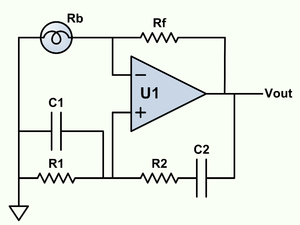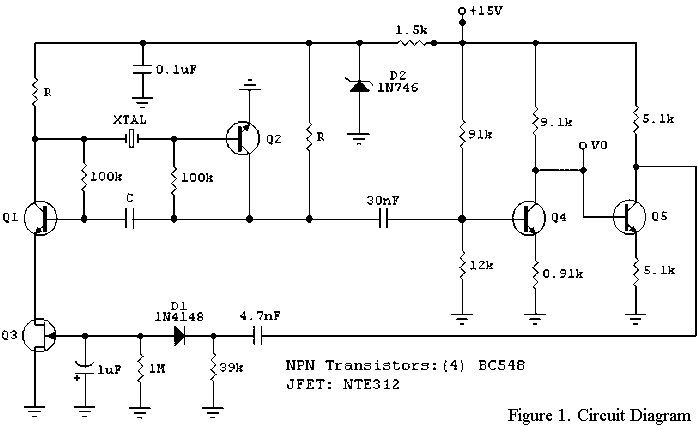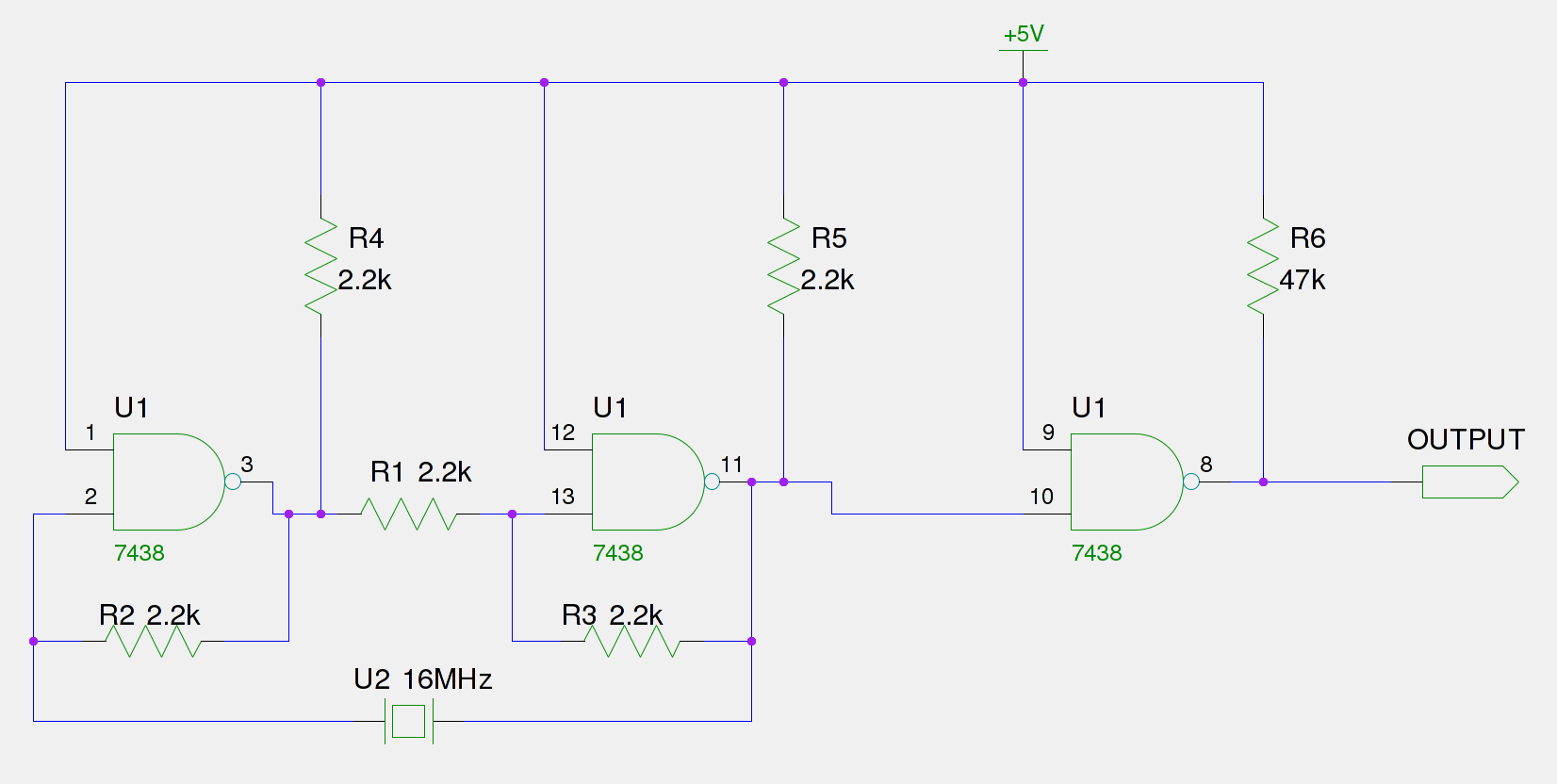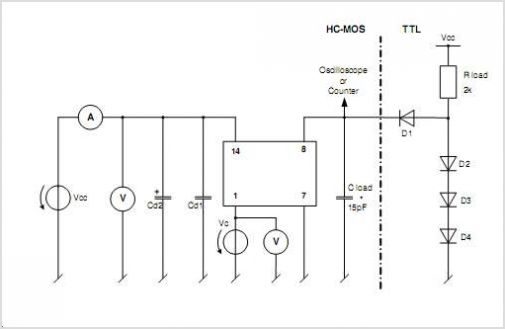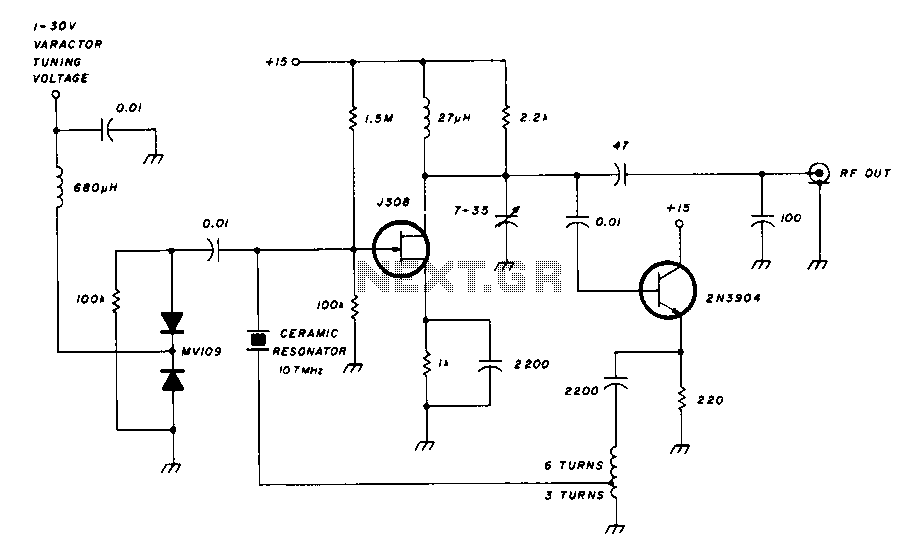
Colpitts 1 To 20Mhz Crystal Oscillator
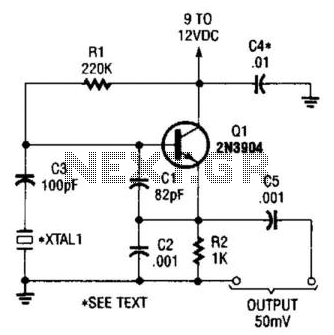
This is a simple Colpitts crystal oscillator for 1 to 20 MHz, which can be easily constructed from spare parts, provided that a crystal is available.
The Colpitts oscillator is a type of electronic oscillator that utilizes a combination of capacitors and an inductor to generate oscillations. In this design, the oscillator operates within the frequency range of 1 to 20 MHz, making it suitable for various applications in RF (radio frequency) circuits, signal generation, and clock generation for digital circuits.
The core of the Colpitts oscillator consists of an LC tank circuit, which is formed by an inductor (L) and two capacitors (C1 and C2) connected in series. The frequency of oscillation is determined by the values of these components according to the formula:
\[ f = \frac{1}{2\pi\sqrt{L \cdot C_{total}}} \]
where \( C_{total} \) is the equivalent capacitance of C1 and C2 in series, calculated as:
\[ C_{total} = \frac{C1 \cdot C2}{C1 + C2} \]
A crystal is used in conjunction with the tank circuit to stabilize the frequency of oscillation. The crystal provides a precise resonant frequency, which enhances the stability and accuracy of the oscillator. The oscillator circuit typically includes a transistor or an operational amplifier configured as a feedback amplifier to sustain oscillations.
To construct the oscillator, the following components are needed:
- A crystal oscillator with a frequency within the desired range (1 to 20 MHz).
- An inductor (L) whose value can be adjusted to fine-tune the frequency.
- Two capacitors (C1 and C2) that set the oscillation frequency and can be selected based on the required performance.
- A transistor or operational amplifier to amplify the signal and provide the necessary gain for oscillation.
- Power supply components to provide the required voltage and current for the circuit operation.
Proper layout and grounding techniques should be employed to minimize noise and interference, which can affect the performance of the oscillator. The output can be taken from the collector of the transistor or the output of the operational amplifier, depending on the specific configuration used.
This simple Colpitts oscillator circuit is advantageous for hobbyists and engineers alike, as it can be easily assembled from readily available components, making it a practical choice for various electronic projects. This is a simpie Colpitis crystal oscillator for 1 to 20 MHz, can be easily made from junk-box part s (provided that a crystal is handy).
The Colpitts oscillator is a type of electronic oscillator that utilizes a combination of capacitors and an inductor to generate oscillations. In this design, the oscillator operates within the frequency range of 1 to 20 MHz, making it suitable for various applications in RF (radio frequency) circuits, signal generation, and clock generation for digital circuits.
The core of the Colpitts oscillator consists of an LC tank circuit, which is formed by an inductor (L) and two capacitors (C1 and C2) connected in series. The frequency of oscillation is determined by the values of these components according to the formula:
\[ f = \frac{1}{2\pi\sqrt{L \cdot C_{total}}} \]
where \( C_{total} \) is the equivalent capacitance of C1 and C2 in series, calculated as:
\[ C_{total} = \frac{C1 \cdot C2}{C1 + C2} \]
A crystal is used in conjunction with the tank circuit to stabilize the frequency of oscillation. The crystal provides a precise resonant frequency, which enhances the stability and accuracy of the oscillator. The oscillator circuit typically includes a transistor or an operational amplifier configured as a feedback amplifier to sustain oscillations.
To construct the oscillator, the following components are needed:
- A crystal oscillator with a frequency within the desired range (1 to 20 MHz).
- An inductor (L) whose value can be adjusted to fine-tune the frequency.
- Two capacitors (C1 and C2) that set the oscillation frequency and can be selected based on the required performance.
- A transistor or operational amplifier to amplify the signal and provide the necessary gain for oscillation.
- Power supply components to provide the required voltage and current for the circuit operation.
Proper layout and grounding techniques should be employed to minimize noise and interference, which can affect the performance of the oscillator. The output can be taken from the collector of the transistor or the output of the operational amplifier, depending on the specific configuration used.
This simple Colpitts oscillator circuit is advantageous for hobbyists and engineers alike, as it can be easily assembled from readily available components, making it a practical choice for various electronic projects. This is a simpie Colpitis crystal oscillator for 1 to 20 MHz, can be easily made from junk-box part s (provided that a crystal is handy).
